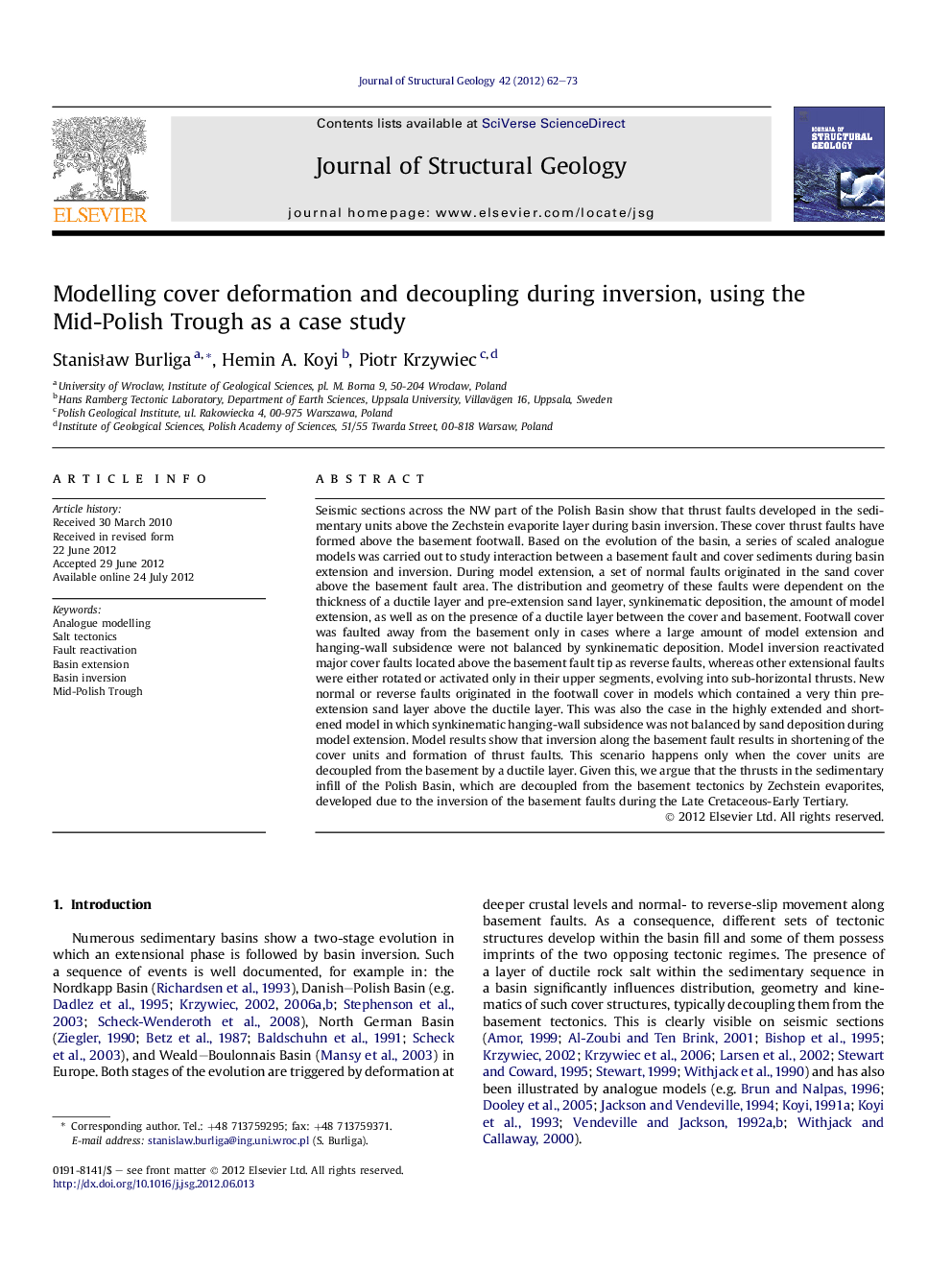| کد مقاله | کد نشریه | سال انتشار | مقاله انگلیسی | نسخه تمام متن |
|---|---|---|---|---|
| 4733405 | 1640535 | 2012 | 12 صفحه PDF | دانلود رایگان |

Seismic sections across the NW part of the Polish Basin show that thrust faults developed in the sedimentary units above the Zechstein evaporite layer during basin inversion. These cover thrust faults have formed above the basement footwall. Based on the evolution of the basin, a series of scaled analogue models was carried out to study interaction between a basement fault and cover sediments during basin extension and inversion. During model extension, a set of normal faults originated in the sand cover above the basement fault area. The distribution and geometry of these faults were dependent on the thickness of a ductile layer and pre-extension sand layer, synkinematic deposition, the amount of model extension, as well as on the presence of a ductile layer between the cover and basement. Footwall cover was faulted away from the basement only in cases where a large amount of model extension and hanging-wall subsidence were not balanced by synkinematic deposition. Model inversion reactivated major cover faults located above the basement fault tip as reverse faults, whereas other extensional faults were either rotated or activated only in their upper segments, evolving into sub-horizontal thrusts. New normal or reverse faults originated in the footwall cover in models which contained a very thin pre-extension sand layer above the ductile layer. This was also the case in the highly extended and shortened model in which synkinematic hanging-wall subsidence was not balanced by sand deposition during model extension. Model results show that inversion along the basement fault results in shortening of the cover units and formation of thrust faults. This scenario happens only when the cover units are decoupled from the basement by a ductile layer. Given this, we argue that the thrusts in the sedimentary infill of the Polish Basin, which are decoupled from the basement tectonics by Zechstein evaporites, developed due to the inversion of the basement faults during the Late Cretaceous-Early Tertiary.
► Analogue models of evaporite overlay deformation in an inverted basin are presented.
► Thrusts may develop above a ductile layer on the footwall during inversion.
► The thrusts indicate simultaneous initiation of basement faulting and sedimentation.
► The thrusts lead to development of pop-up structures above the ductile layer.
Journal: Journal of Structural Geology - Volume 42, September 2012, Pages 62–73